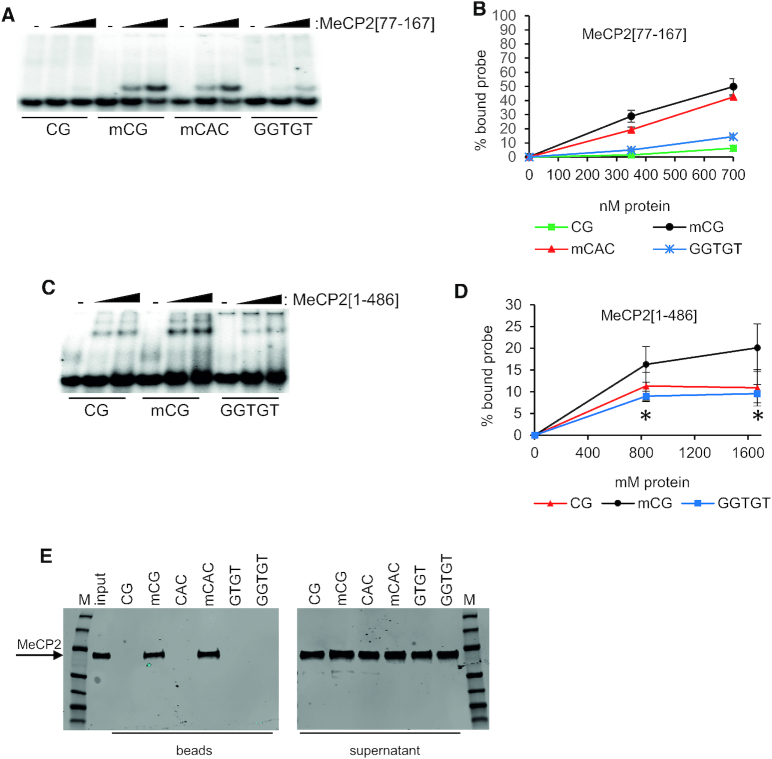Figure 3.
Cytosine methylation-independent binding requires specific fragments of MeCP2. (A) EMSA using varying amounts of MeCP2[77–167] or no protein (−) with probes containing non-methylated CG (CG), methylated mCG (mCG), methylated CAC (mCAC) or GGTGT. (B) Graph quantifying MeCP2[77–167] binding to probes containing CG (squares), mCG (circles), mCAC (triangles), or GGTGT (crosses). Mean percentage of probe shifted (±SEM) based on triplicate experiments. The results with the minimal MBD may be compared with those for MeCP2[1–205] in Figure 1C and D. (C) Full-length MeCP2[1–486] has a diminished ability to bind GGTGT. EMSAs using varying amounts of MeCP2[1–486] or no protein (−) with probes containing non-methylated CG, methylated CG (mCG), or GGTGT. (D) Graph showing quantification of MeCP2[1–486] binding to probes containing mCG (filled circles), non-methylated CG (filled triangles), or GGTGT (filled squares). Mean percentage of probe shifted (±SEM) based on triplicate experiments. Statistical significance was measured between mCG and GGTGT: *P < 0.05, **P < 0.01 and ***P < 0.001 (unpaired two-tailed t-test). The results with full-length MeCP2 may be compared with those for MeCP2[1–205] in Figure 1C and D. (E) Western blots with anti-MeCP2 antibody following DNA pull-down from rat brain nuclear extracts using immobilised DNA sequences containing CG, CAC, mCG, mCAC, GTGT, GGTGT. Left panel shows MeCP2 eluted from beads. Right panel shows that MeCP2 is present in all of the bead supernatants following pull-down. M = protein marker (Page-Ruler, Thermo Scientific).

